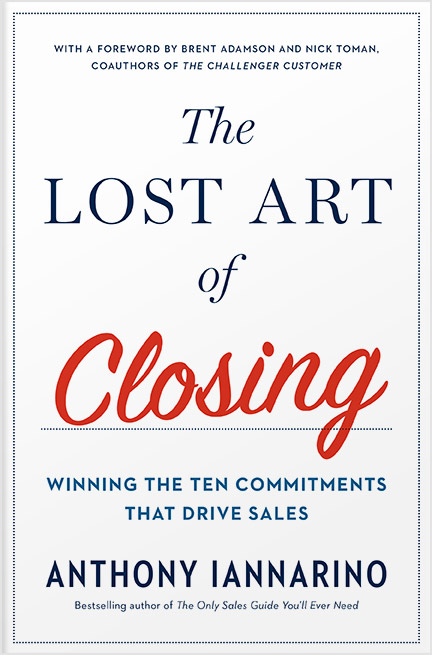The following strategy is for salespeople who are asked to present to a prospect by a broker or agent. Here is how to win when you have an hour to present to a prospect you haven’t met. You might want to read this primer on Value Creation before you read this post.
The Temptation to Sell
The temptation when asked to present is to establish your credibility by sharing information about your company. Because the prospective client doesn’t know you or your company, you need to start by providing your bona fides. Following this line, you show your potential client the logos of the companies that make up your client list. The more impressive the logo, the better your company, so the thinking goes. Once you’ve established your credibility, you move onto the other things you believe your prospective client needs to see.
How is it possible for your prospect to choose you over the two or three other companies in this beauty pageant if you don’t explain your solution? You plow forward with your solution, providing careful details over the course of, say, 100 slides, to ensure the prospect understands your approach. You believe sharing the solution allows you to differentiate yourself from your competitors. The truth is that it’s more likely you and your competitor could swap your company logos on your respective logos without much trouble.
Making sure your end on a high note, you share testimonials and case studies to prove you can produce the results your prospective client needs. I recently heard of a situation in which two competing companies both shared a testimonial from the sales client. Awkward.) If you succeeded for these other companies, you would surely succeed for your prospective client.
If this approach isn’t the one you would take in the first meeting with a prospect you developed, why would you choose this approach when invited to present to a prospect from a broker or agent?
One of the biggest problems with this plan is that your approach to the client is no different from your competitors. Here is how to turn the tables and create a preference to work with you.
Creating a Preference in One Hour
You have an hour to create a preference to work with you and your company. If the approach above isn’t likely to achieve that outcome, what is a better approach?
Generally, the way we have thought about the way buyer’s buy is that they become unhappy with something or discover some need. Later, they explore and evaluate their options, seek consensus, and resolve their concerns. There are buying more complicated journeys, but the orienting generalization above provides enough guidance for an effective strategy. Because you have had no discovery meeting, you enter this meeting with the prospect at the “evaluating options” phase of their process. The process has deprived both you and your client of the most valuable part of the sales conversation, something we call discovery.
If you want another view of the buyer’s journey from a practical, tactical B2B sales approach, see my second book, The Lost Art of Closing: Winning the 10 Commitments That Drive Sales.No more pushy sales tactics. The Lost Art of Closing shows you how to proactively lead your customer and close your sales. 
To create a preference, you need to treat this hour-long meeting as a discovery. You need to help your prospective client with a better process for getting than the broker or agent’s boilerplate RFP. Fortunately, the buyer wants what they want, and they are trying to decide who is going to make sure they get it.
Disrupting the Process without Being Disruptive
Instead of going straight to your slide deck, the first thing you might do to distinguish yourself is to ask well-placed questions. You want to ask questions designed to cause your prospective client to recognize that there are factors and choices they haven’t considered. You want to ask a question that causes your prospect to discover something about themselves, that something about which they are going to have strong opinions. You want your questions to expose how they are going to get what they want with you as their partner.
These questions should be strategic and prove you are consultative. Your questions prove you know things that will be useful in helping them get what they want. A disruptive question might be something like, “What are the most strategic changes you are planning to make over the next 18 to 24 months to improve your result in this area?” You might also ask a question like, “Of three different models companies in our space operate, have you decided which model makes the most sense for you now?” If you want to expose a knowledge gap, you might ask a technical question like, “What was your overall cost per transaction and what changes have you already made to lower your cost structure?”
If you want to be a trusted advisor, you need trust and advice. Your questions prove you have the business acumen and situational knowledge to provide the guidance. Your questions also move you back to discovery, where you have an excellent chance to reframe how your prospect is thinking about their decision.
What Do They Want
If there is one thing I know to be true about prospects and dream clients, it is that they want you to hear them. They want someone to listen to them, to understand them, to understand their needs, and to care enough to help them get what they want. If you are talking about your company and your solution, you are depriving your prospect of the opportunity to tell you what they want and why they want it.
You can very easily ask a single question like, “Can you share with me how you are thinking about the outcome you need and what you are going to need from a good partner?” There are many ways to ask this question, but whatever the words, giving your prospective client a chance to say the words out loud to a person who is paying attention, taking notes, and sharing a little about how they might be able to help produces a better result than an approach that we might call “desperate proof providing.”
Taking Control of the Agenda
You are better served by asking questions than making statements about you and your company. I once had a meeting with a decision-maker who asked me to share with him information about my company. I told him it would be the least interesting conversation we could have in our short time together. When he insisted, I said, “The best way to describe my company is to tell you some of the things we are thinking about and what they mean to our clients.” Instead of sharing anything about my company, I shared trends in the industry and asked him to share his thoughts as a way to elicit what he wanted.
For more on this approach, see Eat Their Lunch: Winning Customers Away from Your Competition.Win customers away from your competition. Check out Eat Their Lunch
If you have been asked to provide an overview of your company, you can be creative about how you share something more meaningful than your company history and accolades (proof that tends to be more valuable later in the sales process). Your slide deck likely already has answers to the questions your dream client has about how they get their results. It’s a much better approach to let to support the conversation with slides than to supplant the discussion with an hour-long monologue.
If you have a single hour, make sure you put it to good use in serving your prospect’s real needs in a way that creates a preference to work with you.








.jpg?width=768&height=994&name=salescall-planner-ebook-v3-1-cover%20(1).jpg)


